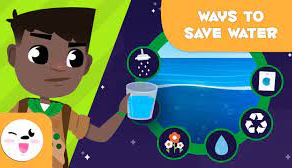All the physical surroundings on Earth are called the environment. The environment includes everything living and everything nonliving.
The nonliving part of the environment has three main parts: the atmosphere, the hydrosphere, and the lithosphere. The atmosphere is the air—the layer of nitrogen, oxygen, and other gases that surrounds Earth. All the oceans and other bodies of water on Earth make up the hydrosphere. The hydrosphere includes the water in the air, such as that in clouds. The lithosphere consists of the outer layer of Earth. This includes the crust and the solid outermost layer of the upper mantle. The lithosphere also includes the rocks and soil on the surface of Earth. People, animals, plants, and all other living things rely on the nonliving parts of the environment to survive. The part of the environment where life happens is called the biosphere.
The biosphere is made up of many ecosystems. These are communities of living things and the nonliving things that they rely on.
Changes in the environment therefore affect living things. Some changes are natural. They include weather conditions; the wearing away, or erosion, of rocks and soil; and natural disasters such as earthquakes.
People make changes in the environment, too. Many of these changes are harmful to living things. Around the world, human activities have resulted in air and water pollution. People also have destroyed the habitats of many animals. In addition, some scientists believe that people’s use of oil, coal, and natural gas has led to a dangerous condition called global warming. This is a rise in the temperature of Earth’s surface.
Today many people are working to protect the environment. These people try to conserve, or save, natural resources. They also try to recycle, or reuse, products to avoid waste and pollution.
©2021 Encyclopædia Britannica, Inc.

















